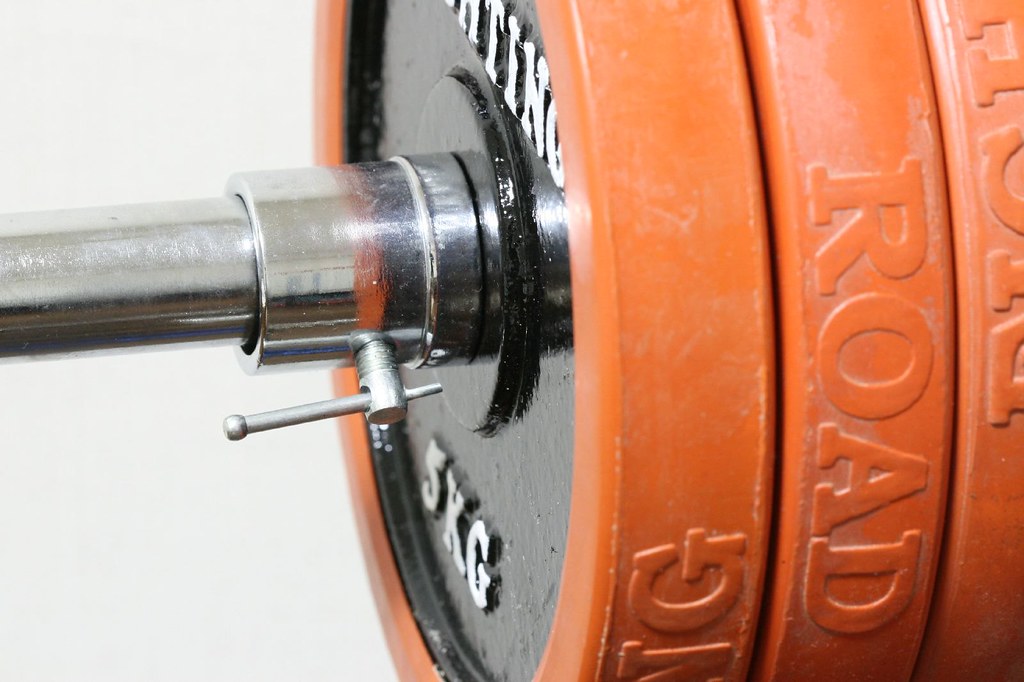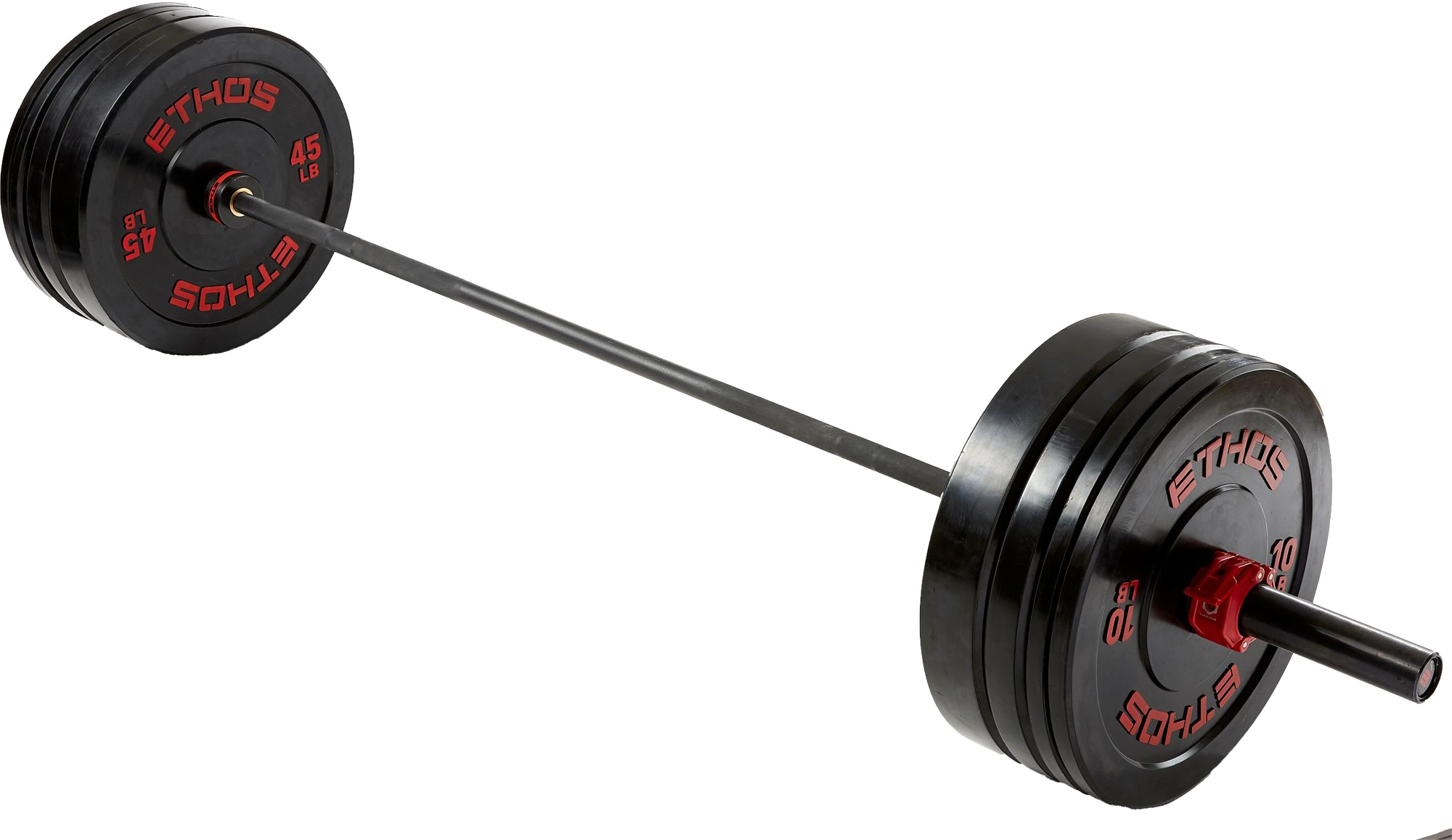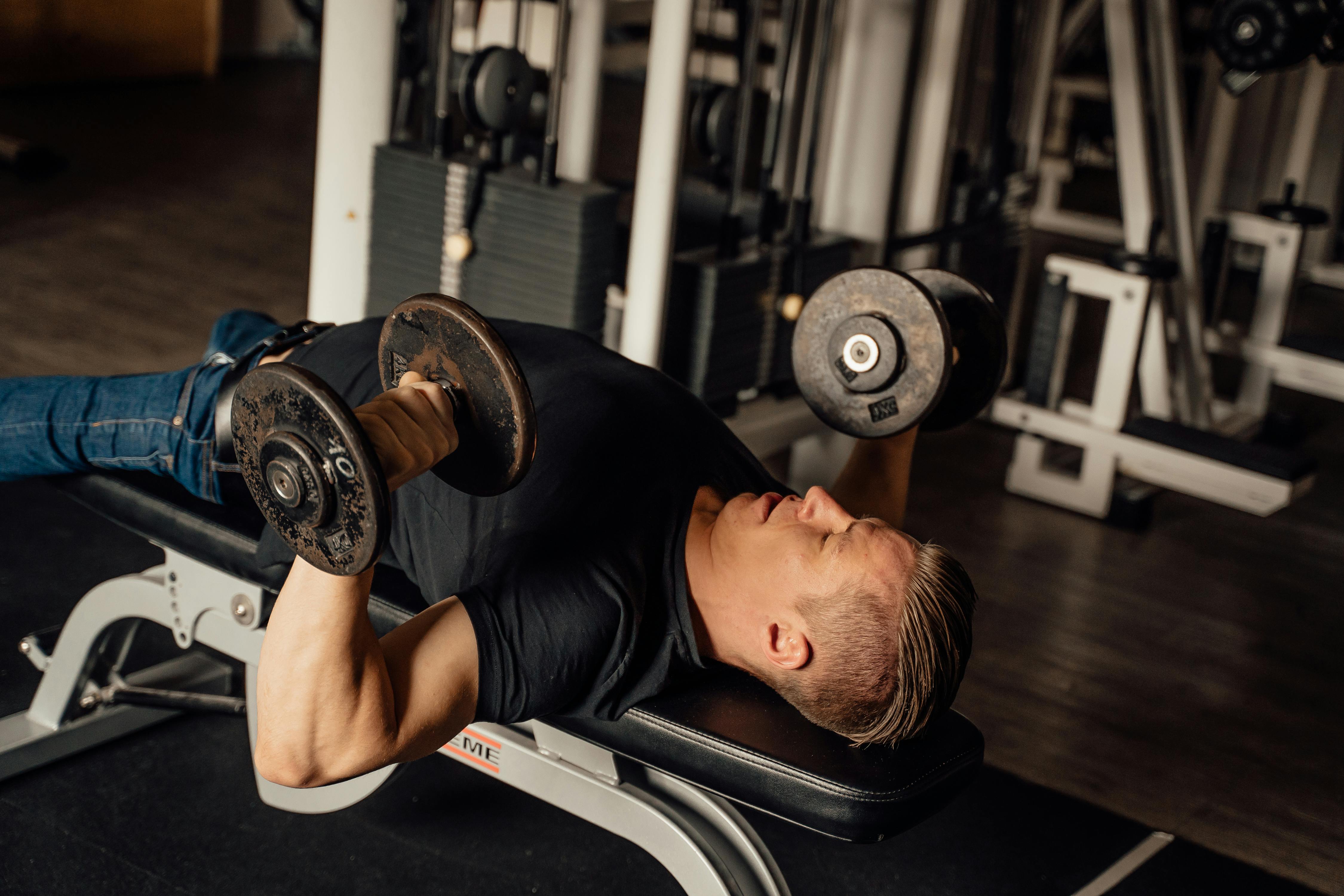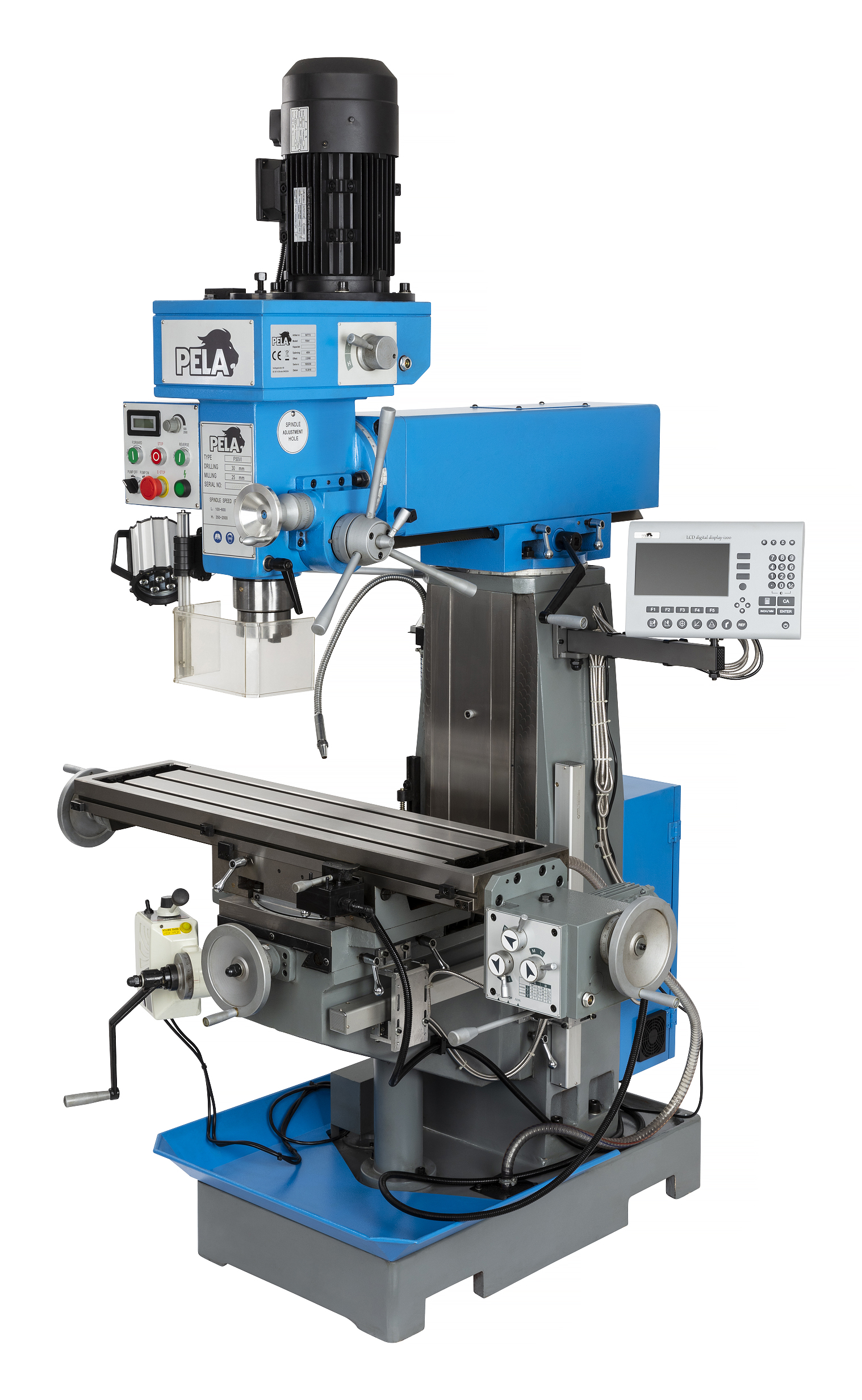
For men over 40, building a strong, well-defined chest is more than an aesthetic goal; it’s a commitment to enduring vitality, functional strength, and overall well-being. Maintaining or increasing muscle mass as we age is paramount, supporting bone health, improving posture, and enhancing athletic performance. Weight training, often mistakenly seen as a young man’s domain, is a lifelong endeavor offering profound benefits, particularly when approached with smart, targeted strategies.
The chest, comprising the pectoralis major and minor, is a prominent muscle group. Understanding its anatomy, including the clavicular head (upper chest), sternal head (mid-chest), and costal attachments (lower chest), is crucial for effective training. This anatomical arrangement clarifies why comprehensive development requires more than just flat bench presses; each region needs specific attention through varied movement patterns, angles, and equipment.
This guide, inspired by expert insights, outlines a scientifically structured chest workout plan designed to maximize strength, size, and definition for men over 40. We’ll delve into the first six foundational exercises, forming the bedrock of a powerful chest routine. Our aim is to provide practical, actionable advice, ensuring you are prepared to achieve substantial gains while prioritizing joint health and fostering long-term fitness. Let’s build that formidable chest.

1. **Barbell Bench Press: The Compound Foundation**The barbell bench press stands as the undisputed king of chest exercises, a compound movement unparalleled in its ability to create mechanical tension across the entire pectoral region. For men over 40, this exercise remains fundamental for significant strength development, allowing for the heaviest loading to stimulate substantial muscle growth by effectively recruiting fast-twitch muscle fibers. It’s the essential starting point for building overall chest mass and raw power, influencing improvements in pushing strength and overall athletic performance.
The barbell bench press stands as the undisputed king of chest exercises, a compound movement unparalleled in its ability to create mechanical tension across the entire pectoral region. For men over 40, this exercise remains fundamental for significant strength development, allowing for the heaviest loading to stimulate substantial muscle growth by effectively recruiting fast-twitch muscle fibers. It’s the essential starting point for building overall chest mass and raw power, influencing improvements in pushing strength and overall athletic performance.
A strategically designed chest workout begins with compound pressing movements when energy and strength levels are at their peak. To perform it optimally, begin with 2-3 progressive warm-up sets, then execute 4 working sets of 6-8 repetitions. Maintain retracted scapulae—shoulder blades pulled back and down—throughout the movement to optimize shoulder positioning and significantly enhance chest activation, minimizing injury risk. A slight arch in the lower back also contributes to proper form, ensuring safety and efficacy by maintaining proper glenohumeral alignment.
Control the eccentric phase, the lowering of the weight, to create additional tension. Your grip width should ideally position your forearms vertically at the bottom of the movement, typically slightly wider than shoulder width. Rest periods of 2-3 minutes between working sets are essential for adequate recovery to maintain high intensity and lift heavy. When performed correctly, this exercise predominantly targets the mid-chest but contributes significantly to overall pectoral development, vital for a balanced physique.
Read more about: Behind the Bench Press: Mastering 12 Major Technique Errors for Safe Mass and Strength Gains

2. **Incline Dumbbell Press: Elevating Upper Chest Development**Following the heavy foundational work of the barbell bench press, the incline dumbbell press provides crucial, targeted focus on the upper chest, a common stubborn development area for many trainees. This exercise specifically engages the clavicular head of the pectoralis major, vital for achieving a balanced chest, as this region attaches from the clavicle to the humerus. It allows for more natural movement arcs based on individual shoulder structure, often making it a more shoulder-friendly alternative to incline barbell variations.
Following the heavy foundational work of the barbell bench press, the incline dumbbell press provides crucial, targeted focus on the upper chest, a common stubborn development area for many trainees. This exercise specifically engages the clavicular head of the pectoralis major, vital for achieving a balanced chest, as this region attaches from the clavicle to the humerus. It allows for more natural movement arcs based on individual shoulder structure, often making it a more shoulder-friendly alternative to incline barbell variations.
Research consistently suggests that bench angles between 30-45 degrees provide optimal upper chest activation, helping maximize engagement of the clavicular head without excessively recruiting the front deltoids. This precision is essential for men over 40 aiming for balanced development, avoiding the mistake of overemphasizing flat pressing at the expense of upper chest growth. Execute 3 working sets of 8-10 repetitions, ensuring 90-120 seconds of rest.
As you lower the dumbbells, position your elbows at approximately 45-degree angles from your body, maintaining strict control throughout the descent. Focus your mind-muscle connection, feeling the upper chest muscles contract powerfully during the pressing phase. The use of dumbbells offers significant advantages, facilitating a greater range of motion for a more complete stretch and intense contraction. Furthermore, independent movement helps prevent strength imbalances, ensuring both sides of your upper chest receive equal stimulation for a symmetrical physique.

3. **Chest Dips: Harnessing Bodyweight for Lower Chest Emphasis**The chest dip serves as an exceptional bodyweight exercise that masterfully shifts the emphasis to the lower chest region, providing a powerful and functional counterpoint to loaded pressing movements. It is an invaluable addition to any chest routine, contributing not only to muscle growth but also to raw functional strength that transfers to numerous athletic endeavors and daily life demands. For men over 40, incorporating robust bodyweight movements is crucial for maintaining optimal joint health, enhancing mobility, and delivering significant muscle-building stimulus without excessive spinal loading.
The chest dip serves as an exceptional bodyweight exercise that masterfully shifts the emphasis to the lower chest region, providing a powerful and functional counterpoint to loaded pressing movements. It is an invaluable addition to any chest routine, contributing not only to muscle growth but also to raw functional strength that transfers to numerous athletic endeavors and daily life demands. For men over 40, incorporating robust bodyweight movements is crucial for maintaining optimal joint health, enhancing mobility, and delivering significant muscle-building stimulus without excessive spinal loading.
To perform chest dips effectively and target the lower chest (specifically the costal attachments of the pectoralis major), it is imperative to lean your torso forward approximately 15-20 degrees throughout the entire movement. This pronounced forward lean ensures the primary focus remains on the chest. Simultaneously, it is critical to maintain slight scapular retraction—keeping your shoulder blades gently drawn together and down—to ensure proper and safe shoulder positioning, thereby maximizing chest engagement and minimizing injury risk.
Execute 3 sets of 10-12 repetitions, allowing for 90 seconds of rest. Strive for a deep stretch at the bottom position, ensuring you maximize the range of motion for superior hypertrophy, but without excessive shoulder depression. For individuals finding bodyweight challenging, using weight assistance is an excellent progressive overload strategy. Conversely, for advanced trainees, external loading can be incorporated. This versatility makes chest dips an indispensable exercise for comprehensive lower chest development, building not only strength but also impressive control and body awareness.

4. **Cable Flyes: Constant Tension for Focused Isolation**Transitioning into more isolated movement patterns, cable flyes offer an exceptional method to create consistent tension throughout the horizontal adduction pattern, thereby directly targeting the chest muscles with minimal involvement from the triceps. This exercise is superb for meticulously shaping and detailing the chest, providing a unique and continuous stimulus that conventional dumbbells, constrained by gravity, simply cannot replicate. For men over 40, precise isolation exercises like cable flyes are instrumental in bringing out definition, refining muscle shape, and addressing specific areas of the pectorals.
Transitioning into more isolated movement patterns, cable flyes offer an exceptional method to create consistent tension throughout the horizontal adduction pattern, thereby directly targeting the chest muscles with minimal involvement from the triceps. This exercise is superb for meticulously shaping and detailing the chest, providing a unique and continuous stimulus that conventional dumbbells, constrained by gravity, simply cannot replicate. For men over 40, precise isolation exercises like cable flyes are instrumental in bringing out definition, refining muscle shape, and addressing specific areas of the pectorals.
The primary chest muscle, the pectoralis major, benefits immensely from the focused tension, engaging the chest throughout its full range. The cable system ensures that resistance is applied evenly from the beginning of the movement to the peak contraction, unlike dumbbells which lose tension as they approach the top of the lift. This sustained load maximizes time under tension, a key factor for hypertrophy.
To set up for cable flyes effectively, adopt a neutral stance positioned squarely between two cable columns, ensuring that the pulleys are set at mid-chest height. Maintain a slight forward lean from the hips to optimize chest engagement. Keep a slight elbow flexion (approx. 10-15 degrees) throughout the entire range of motion, which should remain constant to isolate the chest effectively. Perform 3 sets of 12-15 repetitions with 60-90 seconds rest. Focus an intense mind-muscle connection, actively feeling the contraction and stretch in your chest muscles.

5. **Pec Deck Machine: Maximum Isolation with a Guided Path**The pec deck machine represents the ultimate tool for achieving maximum isolation of the chest muscles, especially invaluable for men over 40 meticulously refining their physique with an emphasis on precision and safety. Its guided movement path completely eliminates the need for stabilizing muscles, allowing you to channel your entire focus on intensely contracting the target muscles without balancing the weight. This singular focus makes it an ideal exercise for deeply targeting the inner chest region and achieving an intense, peak contraction that sculpts definition.
The pec deck machine represents the ultimate tool for achieving maximum isolation of the chest muscles, especially invaluable for men over 40 meticulously refining their physique with an emphasis on precision and safety. Its guided movement path completely eliminates the need for stabilizing muscles, allowing you to channel your entire focus on intensely contracting the target muscles without balancing the weight. This singular focus makes it an ideal exercise for deeply targeting the inner chest region and achieving an intense, peak contraction that sculpts definition.
This machine-based movement creates an intense contraction, particularly in the inner chest region, through its fixed movement path that maintains optimal positioning throughout the entire range of motion. It allows for controlled isolation, making it an excellent choice for finishing a chest workout or for those with shoulder considerations who benefit from a supported movement pattern. It effectively targets the sternal head of the pectoralis major, contributing to that crucial “inner chest” appearance.
When engaging with the pec deck machine, always maintain slight scapular retraction throughout the movement. You will perform 3 sets of 12-15 repetitions, with 60 seconds of rest, deliberately emphasizing the squeeze at the point of peak contraction to maximize muscle fiber recruitment and activation. A particularly effective advanced technique is to implement the final set as a drop set. Control the eccentric (opening) phase of the movement, actively resisting the weight and feeling the stretch in your chest muscles as your arms slowly open.

6. **Pushup: The Foundational Bodyweight Chest Builder**You have undoubtedly performed pushups countless times throughout your fitness journey, and for good reason—they are an indispensable, foundational exercise for effectively training your chest, shoulders, and triceps, making them a true cornerstone for cultivating a well-rounded and functionally strong physique at any age. For men over 40, mastering the impeccable form of a pushup transcends mere muscle building; it’s about establishing fundamental strength, enhancing core stability, and diligently maintaining optimal joint health, especially around the shoulders and elbows. Its inherent accessibility means it can be performed virtually anywhere, fostering remarkable consistency.
You have undoubtedly performed pushups countless times throughout your fitness journey, and for good reason—they are an indispensable, foundational exercise for effectively training your chest, shoulders, and triceps, making them a true cornerstone for cultivating a well-rounded and functionally strong physique at any age. For men over 40, mastering the impeccable form of a pushup transcends mere muscle building; it’s about establishing fundamental strength, enhancing core stability, and diligently maintaining optimal joint health, especially around the shoulders and elbows. Its inherent accessibility means it can be performed virtually anywhere, fostering remarkable consistency.
The pushup is a remarkable full-body movement that, while emphasizing the chest, also significantly engages the anterior deltoids and triceps as crucial synergists. The core and glutes play a vital role in maintaining the rigid plank position, essential for proper execution and preventing the lower back from sagging. To execute with flawless form, begin in a high plank position with hands directly beneath shoulders or slightly wider, and feet close together. Maintain a perfectly straight spine by vigorously engaging your core and squeezing your glutes, keeping your gaze downwards for a neutral neck position.
As you meticulously lower your chest towards the floor, keep your elbows relatively close to your torso (around a 45-degree angle), consciously avoiding flaring them out wide to safeguard your shoulders and maximize chest engagement. Descend until your chest is just above the floor, or as deep as your body allows without compromising form. Then, push straight off the ground with purposeful power, driving through your hands up to the top position until your elbows are fully straight, completing the repetition with control. Aim for 3 to 4 sets of 12 to 15 repetitions. This fundamental bodyweight movement is essential for establishing and sustaining foundational chest strength and muscular endurance.
For men over 40, optimizing chest development means embracing variety and precision in your training. Building upon the foundational movements, the next set of exercises focuses on specialized techniques and isolation work, crucial for addressing all areas of the pectorals and enhancing definition. We’ll also delve into progressive overload and highlight common pitfalls, ensuring your efforts yield continuous, injury-free growth.

7. **Dumbbell Chest Fly: Sculpting with Intent**The dumbbell chest fly is a go-to exercise for creating deep tension and sculpting chest definition, primarily isolating the pectorals through horizontal adduction. This focus is particularly beneficial for men over 40, allowing meticulous muscle engagement without excessive shoulder stress when performed correctly. It’s about feeling the stretch and contraction, not just moving weight.
The dumbbell chest fly is a go-to exercise for creating deep tension and sculpting chest definition, primarily isolating the pectorals through horizontal adduction. This focus is particularly beneficial for men over 40, allowing meticulous muscle engagement without excessive shoulder stress when performed correctly. It’s about feeling the stretch and contraction, not just moving weight.
To execute, lie on a flat bench, gripping a dumbbell in each hand. Press weights above your chest, ensuring they don’t touch, and maintain full body tension. A slight inward turn of your pinkies can optimize chest activation, guiding the movement to emphasize the squeeze.
Carefully lower your arms from your shoulders, maintaining a slight bend in your elbows. Descend only as deep as comfortable, feeling a profound stretch. To return, actively squeeze your shoulder blades and powerfully contract your chest to bring weights back up, emphasizing that peak squeeze. Perform 3 sets of 10 to 12 repetitions, with 60-90 seconds of rest.

8. **Dumbbell Floor Press: Shoulder-Friendly Power**When a bench is unavailable, or if shoulder health is a priority, the dumbbell floor press is an exceptional choice for building your chest. Its limited range of motion at the bottom, due to elbow contact with the floor, significantly reduces shoulder strain, ideal for men over 40 prioritizing joint health without sacrificing gains. It’s also perfect for effective home workouts.
When a bench is unavailable, or if shoulder health is a priority, the dumbbell floor press is an exceptional choice for building your chest. Its limited range of motion at the bottom, due to elbow contact with the floor, significantly reduces shoulder strain, ideal for men over 40 prioritizing joint health without sacrificing gains. It’s also perfect for effective home workouts.
To set up, lie on the floor gripping a dumbbell in each hand. Position your feet flat, driving through heels and squeezing glutes for a stable base. This protects your lower back and channels energy efficiently.
As you press upward, keep elbows at approximately a 45-degree angle to your torso for shoulder safety and maximum chest engagement. Squeeze your chest forcefully at the top. Lower weights with control, allowing elbows to briefly rest on the ground before initiating the next press. Aim for 3 sets of 8 to 10 repetitions, resting 90 seconds.

9. **Machine Chest Press: Controlled Fatigue for Growth**The machine chest press is a gym staple, offering a safe and highly effective way to build chest muscle and train to fatigue without a spotter. Its guided movement path provides control, making it invaluable for men over 40 who benefit from supported movements and reduced injury risk, especially when performing heavy sets. This isolation allows complete focus on targeted hypertrophy.
The machine chest press is a gym staple, offering a safe and highly effective way to build chest muscle and train to fatigue without a spotter. Its guided movement path provides control, making it invaluable for men over 40 who benefit from supported movements and reduced injury risk, especially when performing heavy sets. This isolation allows complete focus on targeted hypertrophy.
First, adjust the seat so handles are about two inches below your shoulders for optimal engagement. Keep shoulder blades tightly squeezed against the back pad, and glutes and lower back firmly wedged. This stable posture maximizes chest activation and spinal protection.
Drive your elbows down and tight, pushing into the floor with your legs for full-body tension. Press forward until arms are extended but not locked, truly squeezing your chest at the top for an intense peak contraction. Control the eccentric phase. Perform 3 sets of 12 to 15 repetitions, with 60 seconds of rest, for high metabolic stress.

10. **Deficit Pushup: Deeper Engagement, Greater Gains**For those who’ve mastered standard pushups, the deficit pushup elevates bodyweight training by significantly increasing the range of motion. By placing hands on a raised surface, your chest descends further, creating a profound muscle stimulus. This leads to greater strength and muscle gains, especially for men over 40 continually challenging their physique.
For those who’ve mastered standard pushups, the deficit pushup elevates bodyweight training by significantly increasing the range of motion. By placing hands on a raised surface, your chest descends further, creating a profound muscle stimulus. This leads to greater strength and muscle gains, especially for men over 40 continually challenging their physique.
To perform, position hands on stable raised surfaces, slightly wider than shoulder-width. Establish a high plank, engaging abs and glutes for a rigid spine, gaze downwards for a neutral neck.
As you lower, squeeze shoulder blades and keep your core tight, allowing your chest to descend below your hands. Pause momentarily at the bottom to maximize stretch, then powerfully press back up. Maintain shoulder blade squeeze and relaxed mid-back. Aim for 3 sets of 6 to 8 repetitions, resting 90-120 seconds.

11. **Band Chest Fly: Dynamic Tension and Joint Health**The band chest fly is a remarkably versatile exercise, excellent as a warm-up, intense finisher, or powerful accessory lift. Its unique resistance, increasing as bands stretch, offers a dynamic, joint-friendly load. For men over 40, it’s superb for hypertrophy and muscular endurance, delivering a pump without undue shoulder stress.
The band chest fly is a remarkably versatile exercise, excellent as a warm-up, intense finisher, or powerful accessory lift. Its unique resistance, increasing as bands stretch, offers a dynamic, joint-friendly load. For men over 40, it’s superb for hypertrophy and muscular endurance, delivering a pump without undue shoulder stress.
As Curtis Shannon, C.S.C.S., notes, “This exercise can be an extremely effective single or double arm exercise increasing hypertrophy and muscular endurance (providing that pump) without putting the amount of stress on the shoulder joints that a chest fly with a dumbbell would.” It’s great for accessory or finisher work.
To execute, attach two bands to a stable base at chest height. Grab ends, wrapping them around palms. Adopt a staggered stance with a slight forward hip lean and straight back. Arms outstretched with a slight elbow bend. Bring hands together, squeezing pectorals, then slowly reverse with control. Perform 3 to 4 sets of 12 to 15 repetitions, 60 seconds rest, to feel constant tension.

12. **T-Bench Glute Bridge Fly: Multi-Joint Stability and Eccentric Control**The T-Bench Glute Bridge Fly combines elements of bench fly and floor press, uniquely stimulating your chest while challenging glutes and core. This demanding bridge position enhances abdominal and glute activation. For men over 40, this multi-joint approach improves body control, strengthens the posterior chain, and offers a shoulder-safe chest pump with eccentric emphasis.
The T-Bench Glute Bridge Fly combines elements of bench fly and floor press, uniquely stimulating your chest while challenging glutes and core. This demanding bridge position enhances abdominal and glute activation. For men over 40, this multi-joint approach improves body control, strengthens the posterior chain, and offers a shoulder-safe chest pump with eccentric emphasis.
Begin by sitting on a horizontal bench edge, dumbbells on lap. Lean back, kicking weights into position as shoulder blades shift onto the bench. Press weights straight up, then drive shoulders into the bench to “set” them. Squeeze glutes and abs to lift hips, forming a strong bridge from knees to shoulders.
With body locked, open arms to lower elbows to the bench, forming a ‘T’. Focus on the eccentric, taking a controlled 3-4 seconds, feeling a deep chest stretch. Once elbows gently touch, powerfully squeeze your chest to fly weights back up with deliberate control. Aim for 3 sets of 10 to 12 repetitions, resting 90 seconds.
**Mastering Progressive Overload for Continuous Chest Growth**
Continuous muscle growth and strength, especially for men over 40, hinges on progressive overload. This means systematically increasing training demands to force adaptation. Consistent progression prevents stagnation, making workout tracking essential for long-term gains.
While adding weight is the obvious method, it’s not the only sustainable one. When you can consistently complete all prescribed reps with perfect form for two workouts, increase by 2.5-5 pounds. However, this method eventually limits, risking technique or joint stress for older lifters.
Beyond weight, consider volume progression (adding sets/movements) or execution quality (greater ROM, intense contractions, mind-muscle connection). Density progression (less rest for same work) creates metabolic stress. Advanced techniques like drop sets or rest-pause training push beyond normal failure. Rotating these methods prevents plateaus, reduces joint stress, and keeps workouts fresh.
**Common Chest Training Mistakes to Avoid for Lifelong Gains**
Even with the best exercises, mistakes can derail chest development and cause injury, a critical concern for men over 40. Awareness and correction are vital for effective, sustainable training. Prioritizing correct form and strategic programming safeguards joints and maximizes results.
**Overemphasizing the flat bench press** is a prevalent error, often neglecting upper and lower pectorals. Balance your routine with incline variations for upper chest, decline/dipping movements for lower chest, and flyes for complete stimulation.
**Improper shoulder positioning**, like scapular protraction during movements, critically reduces effectiveness and increases impingement risk. Always maintain slight scapular retraction—shoulder blades gently drawn together and down—to enhance chest activation and protect the vulnerable shoulder joint.
**Limited range of motion** hinders growth. Partial movements fail to provide full stretch and contraction, missing crucial stimuli. Full-range training, covering complete contractile and stretched positions, yields superior hypertrophy. Reduce load if needed for full, controlled movements; quality and depth surpass heavier partial reps.
Finally, **neglecting progressive overload** causes plateaus. Performing the same exercises with similar weights/reps without increasing demands prevents adaptation. Implement structured progression—more weight, sets, reduced rest, or advanced techniques. Systematically track these increments to ensure consistent adaptation.
**The Path to Your Best Chest Over 40**
Building a formidable chest after 40 is an empowering journey combining smart training with dedication. By integrating these targeted exercises—from isolation for definition to variations for stability and joint health—you’re strategically shaping your physique. Consistency and progressive overload are the ultimate recipes for success. Embrace variety, prioritize form, and avoid common mistakes for sustained growth and impressive strength. This is about fortifying your body for years ahead, proving age is just a number in fitness. Keep challenging yourself, and build a chest exemplifying power and resilience.




